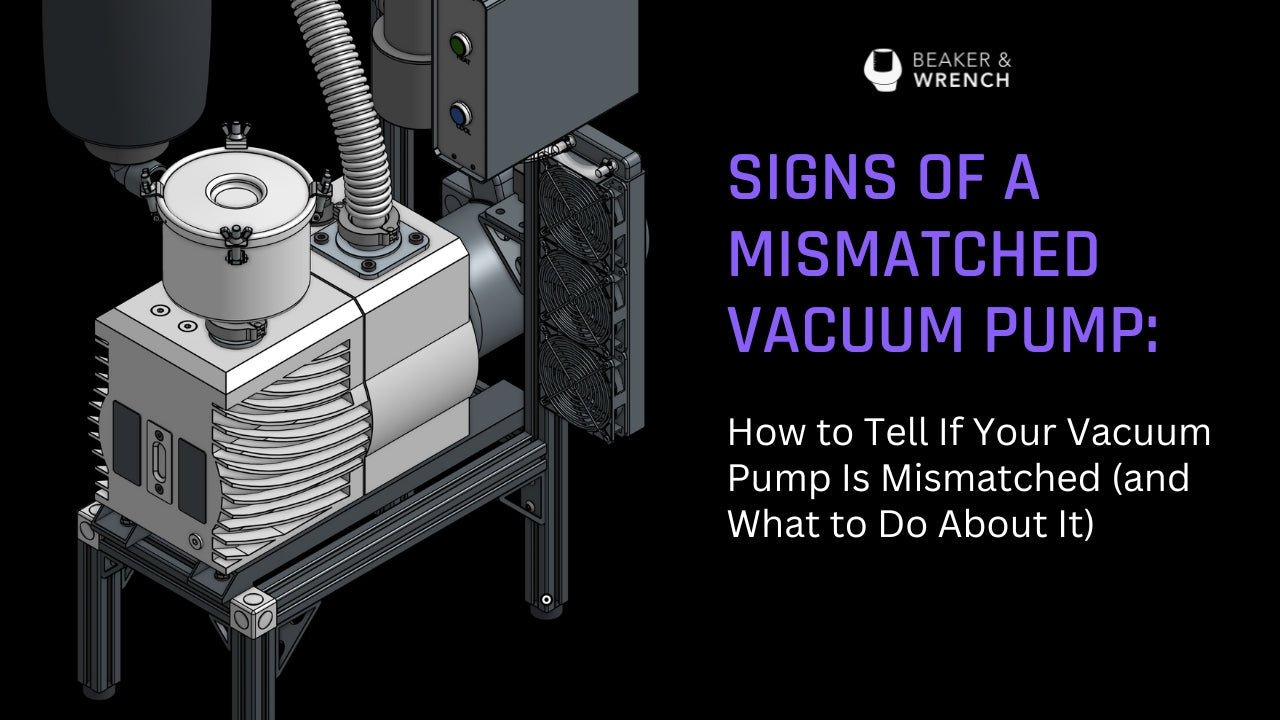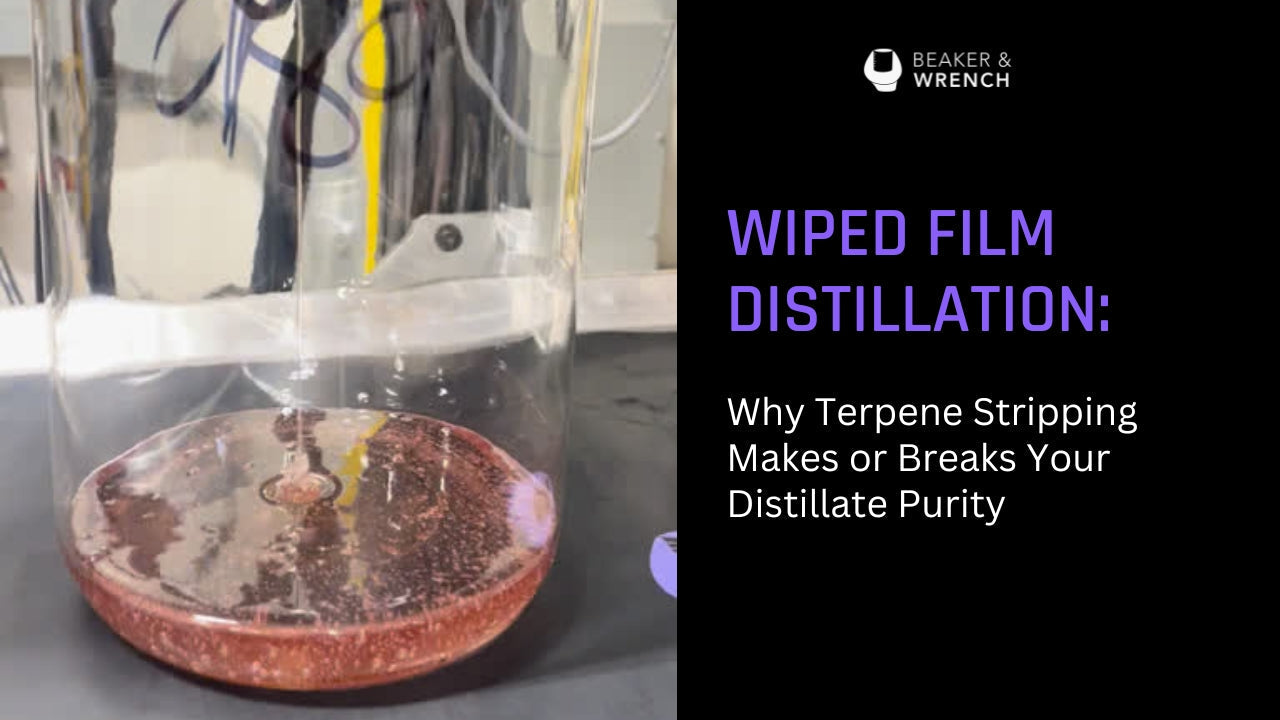In my last blog, I discussed why choosing the right vacuum pump for your distillation setup is crucial. I broke down the features of some of the most common pumps to help you better understand how they align with your specific process needs. Still, mismatches do happen. So, how do you know if your pump isn’t quite right? Use the following information to help you determine if the pump you are using is the right fit.
Signs of a Mismatched Vacuum Pump
- Inability to Reach Desired Vacuum Level: If your pump can’t achieve the vacuum depth required for your process, it’s a clear indication that it’s not the right fit. This is often a sign of leaks or poor maintenance, but can also be caused by using a pump with insufficient displacement for the system’s gas load. Even if the free air displacement seems appropriate, it may not be able to handle the load at low pressures where ultimate vacuum (or more precisely, the pump performance curve) may play a bigger role than total CFM.
- Frequent Maintenance: If you find yourself constantly changing the oil or repairing your pump, it may be struggling to handle the demands of your process. Wet processes, in particular, can quickly degrade pumps that are not designed to handle them.
- Slow Processing Times: If your distillation process is taking longer than expected, a mismatched pump could be the culprit. Insufficient pumping speed or ultimate depth can slow down the entire process, reducing efficiency.
- Contamination Issues: If your pump is contaminating your product or vice versa, it’s a sign that the pump is not compatible with your process. This is a common issue when using oil-sealed pumps in wet processes.
- Overheating: Overworking your pump to achieve the appropriate pressures can lead to overheating issues. If you notice that your pump overheats, you likely need to switch to a different model.
Now that you know how to identify a mismatched pump, how do you maintain your vacuum system? You can use the following information as a guide.
Maintaining Your Vacuum System
Even with the right vacuum pump, proper maintenance is crucial for ensuring optimal performance and longevity. Here are some essential maintenance tips:
- Regular Oil Changes: For rotary vane pumps, regular oil changes are essential to prevent contamination and maintain vacuum depth. Some processes required daily oil changes while others, especially with a good cold trap can last a couple weeks.
- Leak Checks: Regularly check your entire vacuum system for leaks. Even small leaks can significantly impact vacuum performance. (I promise to do a blog on leak checking soon)
- Filter Cleaning: Clean or replace filters regularly to prevent clogs and maintain pumping speed. Dirty filters can restrict airflow and reduce the pump’s efficiency.
- Proper Staging: Ensure that your vacuum pump is properly staged and connected to your system. The manifold and piping should be optimized for efficient airflow and minimal pressure drop (I think sometimes this matters more than the pump itself).
- Pre-Process Testing: Before starting your distillation process, test your vacuum system to ensure that it’s functioning correctly. This can help you identify and address any issues before they impact your results.
It is important to keep up with vacuum pump maintenance to avoid larger problems. If you cannot do the maintenance yourself, hire a professional.
Choosing the Right Pump: A Summary
Selecting the right vacuum pump for your distillation system is a critical decision that can significantly impact your process. By understanding the different types of pumps, their strengths and weaknesses, and the specific requirements of your application, you can make an informed choice that maximizes efficiency, minimizes downtime, and ensures optimal results. It can be a tough decision to make, but you should have all the knowledge you need to make an informed decision.
In conclusion, choose wisely, maintain diligently, and enjoy a well-optimized vacuum system. Remember, the right vacuum pump is not just a piece of equipment; it’s an investment in the success of your distillation process. So, take the time to assess your needs, explore your options, and choose a pump that will serve you well for years to come.




Leave a comment
All comments are moderated before being published.
This site is protected by hCaptcha and the hCaptcha Privacy Policy and Terms of Service apply.